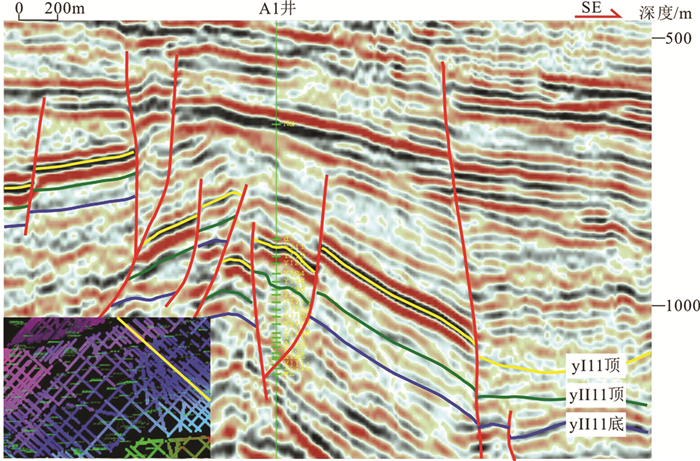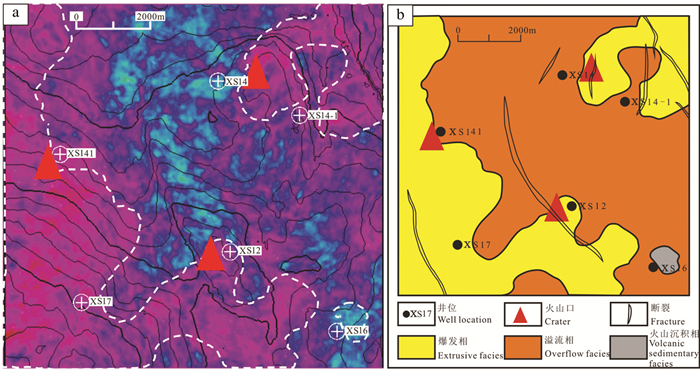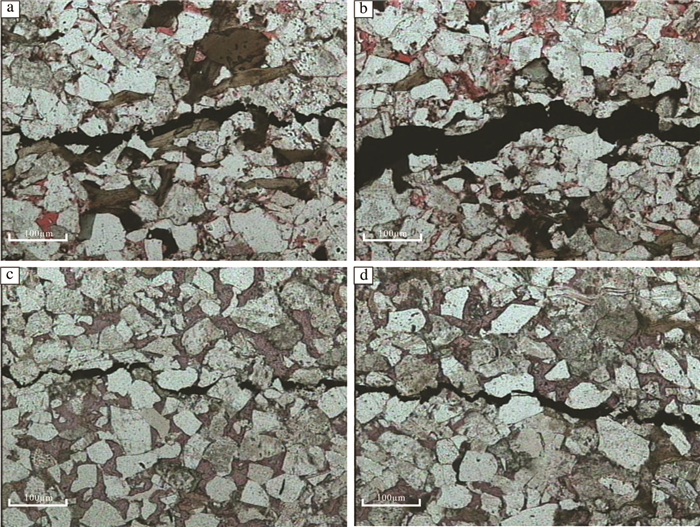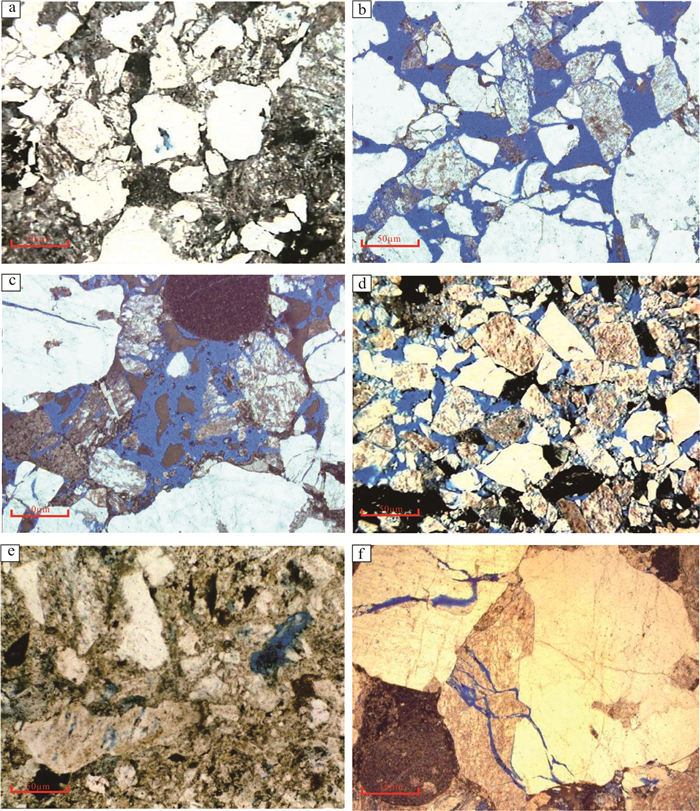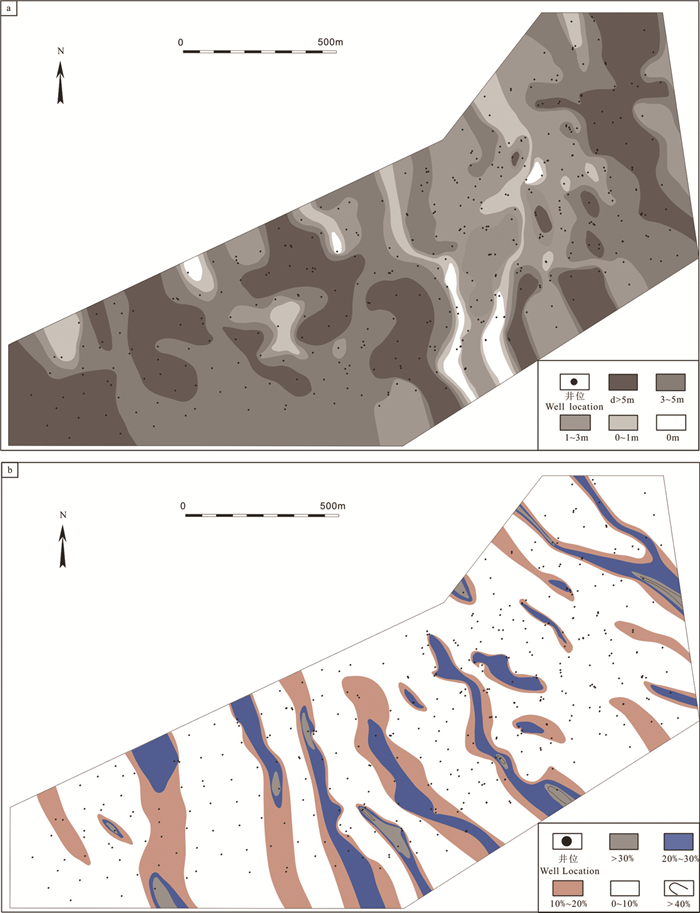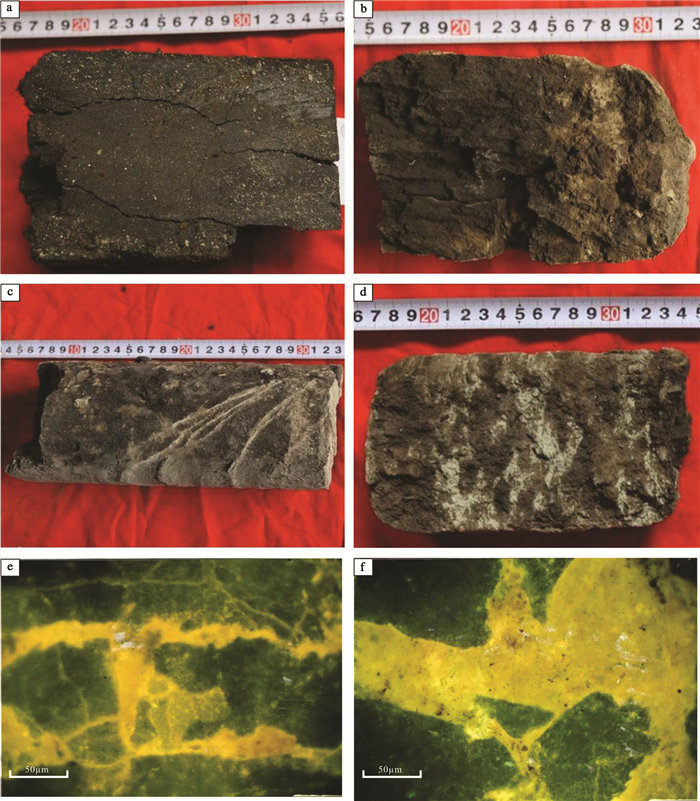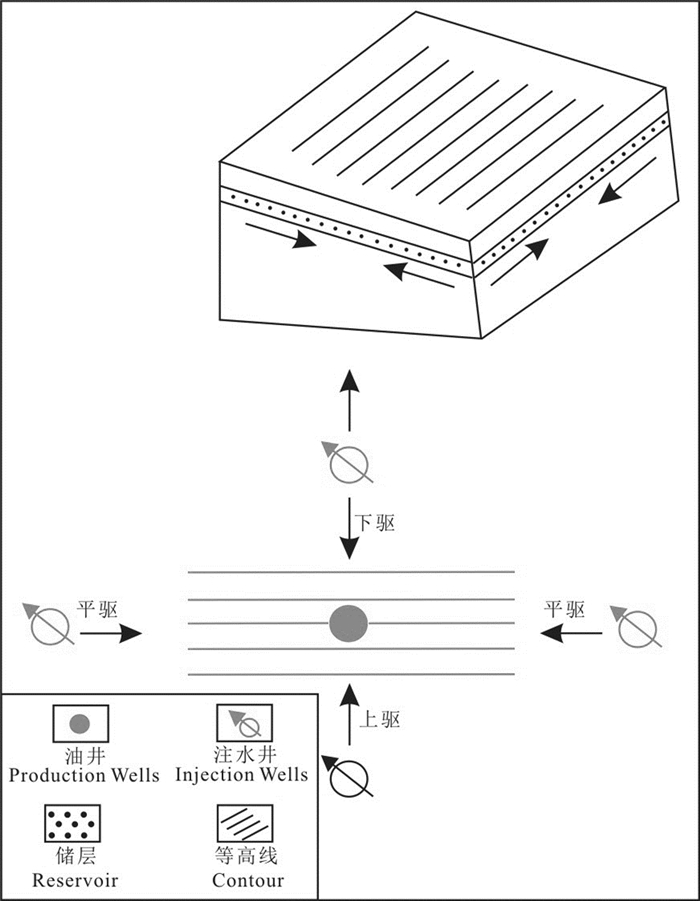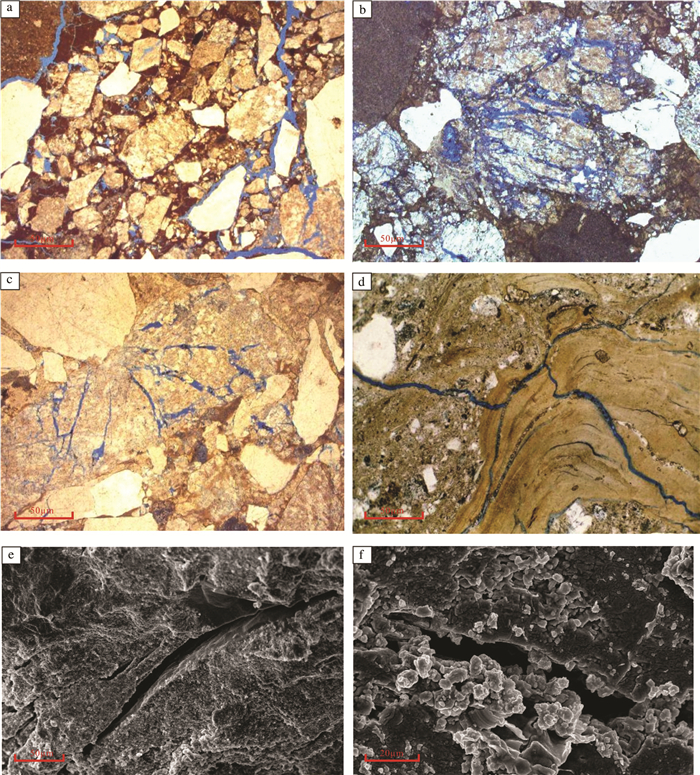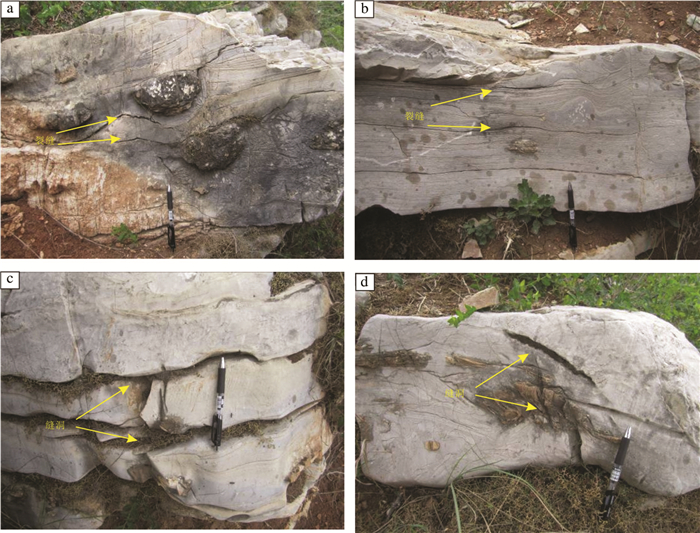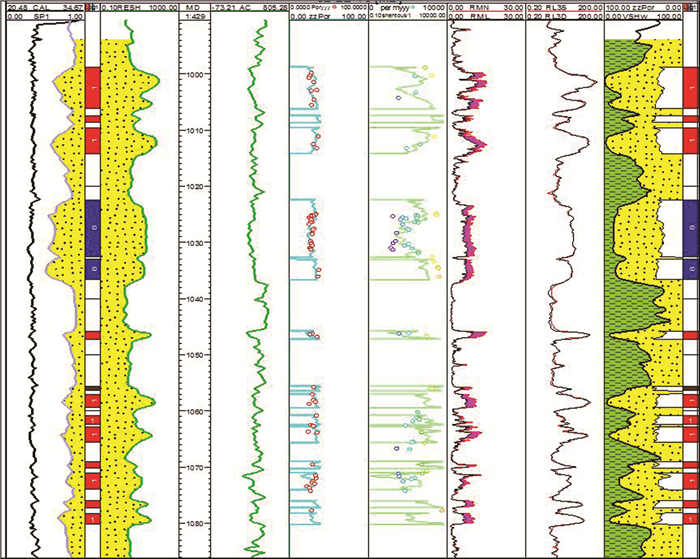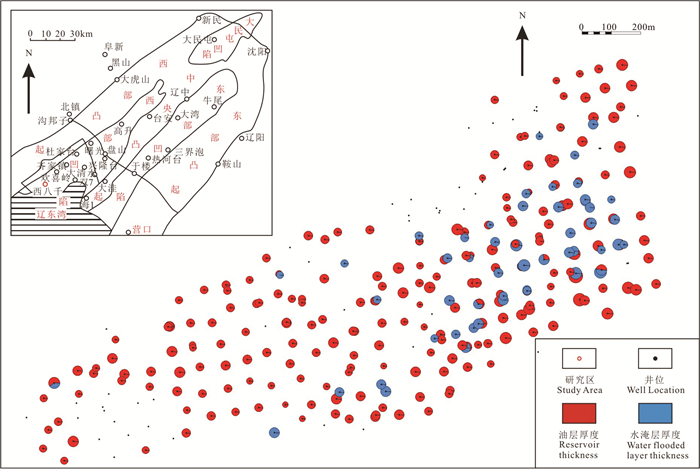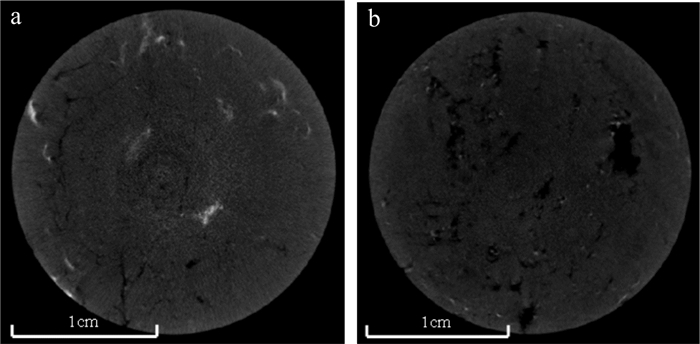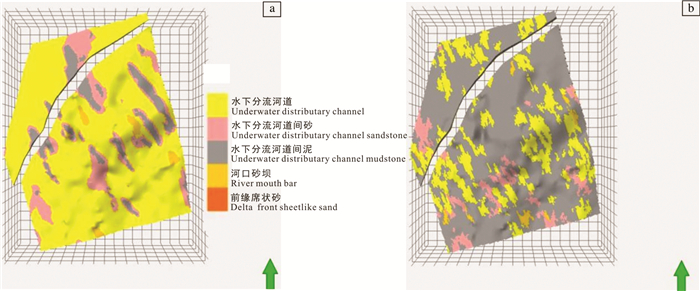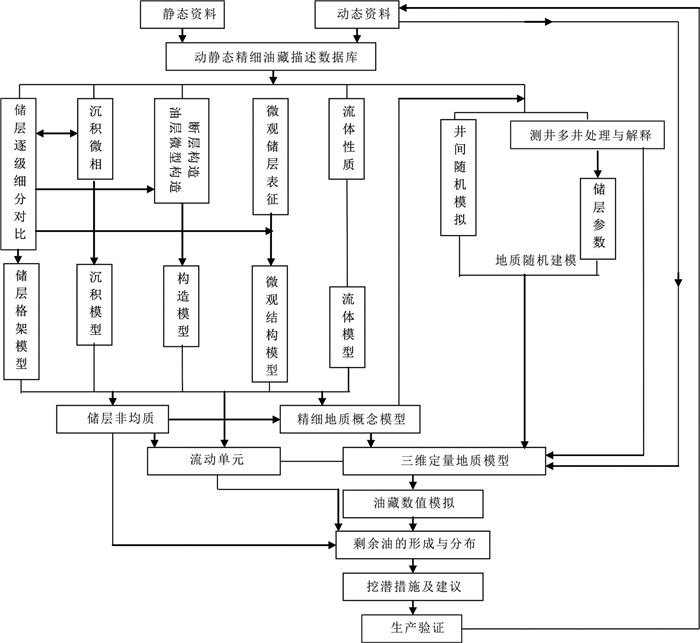-
摘要:
结合研究实践,将中国石油精细油藏描述研究进展总结为基于开发地震技术的复杂构造精细研究、潜山复杂岩性识别技术、井震结合储层精细预测技术、特低渗透储层裂缝表征技术、砾岩储层微观孔隙结构分类研究、基于密井网资料隔夹层刻画技术、砾岩油藏水淹层解释技术、油田开发过程中储层变化规律研究、砾岩储层水流优势通道识别技术、低渗透储层定量分类评价技术、断块油藏构型建模技术和多学科剩余油综合表征技术等12个方面。总结目前精细油藏描述研究中存在8方面问题,主要包括微构造(特别是低级序断层)解释无法满足油田开发需求、单砂体边界刻画和井间预测难度很大、裂缝表征与地质建模问题、碳酸盐岩缝洞型储层定量预测十分困难、复杂储层测井解释仍需持续攻关、水流优势通道识别预测问题、剩余油表征方法单一难以满足生产需要、精细油藏描述成果管理现状无法满足工作需求。最后指出了精细油藏描述研究的发展趋势。
Abstract:The latest progress of the studies on reservoir's fine description of petroleum in China is shown as the following 12 aspects, fine earthquake technology-based complex structure study, complex buried hill lithology recognition technology, fine prediction technology of reservoir through combination of well data and seismic data, characterizing techniques for fissures of low permeable reservoir, classification of microscopic pore structure of conglomerate reservoir, interlayer insulation features based on the data of dense well pattern, water flooded layer interpretation of conglomerate reservoir, reservoir variation law during the development of oilfields, flow channel identification technology of conglomerate reservoir, quantitative classification evaluation of low permeable reservoir, configuration modeling of fault block oil reservoir and multidisciplinary comprehensive characterization technique of residual oil, etc. At present, in the fine description research of reservoir there exist the following eight aspects of problems, mainly including interpretation of microstructures (especially low sequence faults) failing to meet oilfield development needs, many difficulties in single sand body boundary features and interwell prediction, fracture characterization and geological modeling, many difficulties in the quantitative prediction of carbonate fractured-vuggy reservoir, logging interpretation of complex reservoirs still needing to be studied continuously, difficulties in inflow channel identification, a single remaining oil characterization method difficult to meet the production needs, and management status of fine reservoir description result that cannot meet the work requirements. Finally, the development trend in the fine description of reservoir is pointed out.
-
1. 研究目的(Objective)
甘肃省高台县大青山地区地处阿拉善地块龙首山基底杂岩带,位于酒东盆地马营凹陷东段山前沉积盆地北缘(图 1a)。区内主要出露有古元古界—新太古界龙首山岩群、中元古界蓟县系墩子沟群、海西期侵入岩、侏罗系龙凤山组和白垩系庙沟组(图 1b)。
为实现研究区金属资源和油气资源的综合调查,中国地质调查局发展研究中心联合甘肃省地调院、探矿工程所、吉林大学在前期“甘肃省高台县臭泥墩—西小口子地区三幅1∶5万矿产远景调查”项目基础上,通过开展专题地质填图、矿产综合信息预测、智能找矿预测等工作,部署实施钻孔ZK1201,以期实现找矿突破。
2. 研究方法(Methods)
利用研究区地质调查、磁法、激电测深、化探数据和无人机影像等资料,开展综合信息解译。采用卷积和孪生网络神经网络模型对区内典型金属矿床成矿作用特征标志、油气赋矿层位进行深度学习,提出工程验证建议。钻探验证所采用钻机为汽车钻,整机包括车底盘、动力系统、液压系统、操控系统等。
3. 结果(Results)
在综合研究和智能预测的基础上,布设的ZK1201孔在钻穿早二叠世花岗闪长岩(图 1c)后,钻遇地层,续钻至393.8 m后终孔(图 1c)。此次工作共钻遇中侏罗统龙凤山组地层220 m,共发现14层油层(总厚145 m,单层最大厚度28 m,最小厚度1.4 m)。钻孔含油性由上部砾岩(油斑级以下)向下部砂岩(富含油或饱含油)逐渐增多,其中高角度裂缝普遍见可流动原油(图 1d~g)。经国家地质实验测试中心分析,原油中饱和烃、芳烃含量分别占32.4%和34.6%,为高品质轻质原油。原油中正构烷烃分布完整,主峰碳数、奇偶优势及甾烷和藿烷分布都指示其陆相烃源岩来源。
野外地质调查发现,白垩系庙沟组近水平发育,与下伏侏罗系龙凤山组呈角度不整合接触。庙沟组主要由厚层暗色泥岩组成,并发育薄层暗色粉砂质泥岩,可能为区域烃源岩层。初步判断成熟的烃源岩排出的油气沿角度不整合运移至侏罗系砂砾岩和砂岩储层后,被逆冲推覆花岗岩体封闭,形成构造-岩性油气藏(图 1h)。
研究发现区域内沉积盆地最南缘边界处在祁连山北缘断裂之下,最北缘处在龙首山断裂的下盘,南北跨度约80 km。区域内沉积地层较厚,其中侏罗系龙凤山组厚约2100 m,白垩系庙沟组厚约900 m,说明研究区具有较大的成藏潜力。此次油气藏的发现,预示着大青山地区具有完整的油气成藏系统,显示出良好油气勘探前景。建议进一步加强油气基础地质调查研究工作。
4. 结论(Conclusions)
(1)在大青山地区花岗岩逆冲推覆体之下的中生代沉积地层中发现原油,所发现的高品质轻质原油,具陆相烃源岩来源特征。
(2)研究区具有良好的油气勘探前景,建议进一步加强油气地质调查研究工作。
5. 致谢(Acknowledgement)
感谢甘肃省地质调查院董国强,北京探矿工程研究所渠洪杰、谭春亮以及国家实验测试中心沈斌在野外工作和样品测试过程中的协助。
致谢: 项目研究过程中,特别感谢中国石油勘探与生产分公司副总地质师胡海燕教授、吴洪彪副处长、曹晨高级主管和大庆、辽河、新疆、长庆、吉林、大港、冀东、华北、青海、玉门、吐哈、塔里木、南方等油田公司相关领导和专家提供的指导和帮助! -
图 2 松辽盆地徐东地区XS12区营城组一段火山岩地震相和火山岩相平面图
a—火山岩第III旋回地震相平面图;b—火山岩第III旋回岩相平面图
Figure 2. Plan of seismic facies and volcanic facies of No.1 Member of Yingcheng Formation in XS12 district, Xudong District, Songliao Basin
a-Plan of seismic facies of the third cycle volcanic rocks; b-Plan of lithofacies of the third cycle volcanic rocks
图 3 鄂尔多斯盆地某区延长组长2油层组镜下薄片裂缝特征
a, b—Z9井,裂缝,深度:1468.59 m;1468.59 m;c, d—D2井,裂缝,深度:1415.16 m
Figure 3. Fractures of thin section under microscope from the Chang 2 oil-bearing layer of Yanchang Formation in one area in Ordos Basin
a, b-Well9, fracture, depth: 1468.59 m; c, d-WellD2, fracture, depth: 1415.16 m
图 4 准噶尔盆地西北缘某区克下组砾岩储层孔隙结构特征
a—J6井,砂砾岩,深度:405.32 m,粒内溶孔;b—J7井,砾质不等粒砂岩,深度:404.66 m,剩余粒间孔;c—J3井,砂质砾岩,深度:406.87 m,收缩孔、剩余粒间孔;d—J9井,中粗砂岩,深度:深度:552.69 m,粒间孔、粒间溶孔;e—T6井,含泥质不等粒砂岩,深度:939.50 m,基质中溶孔、粒内溶孔;f—J8井,含灰质砂砾岩,深度:430.73 m,微裂缝
Figure 4. Pore structure of conglomerate reservoir in Lower Karamay Formation in an Area on the northwestern margin of Junggar Basin
a-Well6, glutenite, depth: 405.32 m, Intragranular dissolved pore; b-Well7, pebbled unequal sandstone, depth: 404.66 m, residual intergranular pore; c-WellJ3, sandy conglomerate, depth: 406.87 m, shrinkage hole, residual intergranular pore; d-WellJ9, grit, depth: 552.69 m, the intergranular hole, intergranular dissolved pore; e-WellT6, argillaceous unequal sandstone, depth: 939.50 m, pores in the matrix, intragranular dissolved pore; f-WellJ8, gray-bearing conglomerate, depth: 430.73 m, microfracture
图 5 辽河盆地西部凹陷于楼油层隔夹层特征
a—单层yI12c-yI23a之间隔层发育特征;b—单层yI12c中夹层频率特征
Figure 5. Characteristics of interlayer between single layers of Yulou oil-bearing layer in west depression of Liaohe Basin
a-Developed interlayer characteristics between single layer yI12c and yI23a; b-Sandwich frequency characteristics of single layer yI12c
图 6 不同含油气盆地岩心和荧光薄片含油性特征
a—辽河盆地西部凹陷某区于楼油层,A2井,灰黑色细砂岩,油砂,深度:990.04~990.19 m;b—辽河盆地西部凹陷某区于楼油层,A10井,灰褐色细砂岩,含油,深度:950.86~951.03 m;c—辽河盆地西部凹陷某区于楼油层,A10井,灰褐色粉砂岩,油浸,深度:941.68~941.88 m;d—辽河盆地西部凹陷某区于楼油层,A261,灰黑色细砂岩,油斑,深度:962.05~962.25 m;e—准噶尔盆地西北缘某区克下组砾岩储层,T6井,灰色砂砾岩,油浸,深度:1076.38 m(荧光薄片);f—准噶尔盆地西北缘某区克下组砾岩储层,T6井,灰色砾状不等粒岩屑砂岩,油浸,深度:1086.38 m(荧光薄片)
Figure 6. Cores of oil-bearing layer of and fluorescent thin sections in different oil-bearing Basins
a-Yulou oil-bearing layer in one area in the Western Depression of Liaohe Basin, WellA2, gray-black fine sandstone, the oil sands, depth: 990.04- 990.19 m; b- Yulou oil- bearing layer in one area in the Western Depression of Liaohe Basin, WellA10, gray- brown fine sandstone, oil, depth: 950.86 -951.03 m; c-Yulou oil-bearing layer in one area in the west sepression of Liaohe Basin, WellA10, taupe siltstone, oil immersion, depth: 941.68-941.88 m; d-Yulou oil-bearing layer in one area in the west depression of Liaohe Basin, WellA261, gray-black fine sandstone, oil spot, depth: 962.05-962.25 m; e-Conglomerate reservoir of the Lower Karamay Formation in a region in the northwest margin of Junggar Basin, WellT6, grey conglomerate, oil immersion, depth: 1076.38 m(Fluorescence section); f-Conglomerate reservoir of the lower Karamay Formation in a region on the northwest margin of Junggar Basin, WellT6, gray pebbly unequal lithic sandstone, oil immersion, depth: 1086.38 m (Fluorescence section)
图 7 斜面微构造水驱油方向示意图(等高线单位为m)
(据李兴国,1993)
Figure 7. Schematic diagram of water displacement direction of inclined plane micro-structure (contour line unit m)
(after Li Xingguo, 1993)
图 9 准噶尔盆地西北缘某区克下组砾岩储层裂缝镜下薄片和扫描电镜特征
a—J6井,深度:408.09 m,含泥质砾质砂岩,微裂缝,剩余粒间孔,粒内溶孔;b—J7井,深度:429.07 m,含菱铁矿砾质不等粒砂岩,微裂缝;c—J8井,深度:421.43 m,含灰质砂砾岩,微裂缝;d—T6井,深度:938.76 m,单片光,含泥质不等粒砂岩,微裂缝;e—J3井,微裂缝,深度:396.09 m;f— J3井,粒间缝与油浸,深度:400.80 m
Figure 9. Thin sections and scanning electron microscope of fractures in conglomerate reservoir of the Lower Karamay Formation in an area on the northwest margin of Junggar Basin
a-WellJ6, depth: 408.09 m, piliaceous pebbled sandstone, microfracture, residual intergranular pore, intragranular dissolved pore; b-WellJ7, depth: 429.07 m, siderite- bearing pebbled sandstone, microfracture; c- WellJ8, depth: 421.43 m, gray- bearing conglomerate, microfracture; d- WellT6, depth: 938.76 m, single light, , argillaceous unequal sandstone, microfracture; e-WellJ3, microfracture, depth: 396.09 m; f-WellJ3, Intergranular seam with oil immersion, depth: 400.80 m
图 11 辽河盆地西部凹陷某区于楼油层测井精细解释成果图
(蓝颜色为测井解释水层,红色为测井解释油层,黄色为测井解释砂岩,绿色为测井解释泥岩)
Figure 11. Fine logging interpretation of Yulou oil-bearing layer in one area of west depression of Liaohe Basin
(blue-water layer interpreted by logging, red-oil layer interpreted by logging, yellow-sandstone interpreted by logging, green-mudstone interpreted by logging)
图 13 松辽盆地某地区营城组一段不同岩石类型孔隙发育CT扫描特征(据陈欢庆等,2016)
a—绿色流纹质凝灰岩,XS21井,营一段,孔隙度9.2%,密度2.39 g/cm3,渗透率0.437 MD,孔隙较发育;b—绿灰色流纹岩;XS14井,营一段,孔隙度14.3%,密度2.26 g/cm3,渗透率1.097 MD,孔隙发育
Figure 13. CT scanning of developed pores in different kinds of rocks of the No.1 Member of Yingcheng Formation in one area in Songliao Basin(after Chen Huanqing et al., 2016)
a-Green rhyolite tuff, Well XS21, one member of Yingcheng Formation, porosity9.2%, density2.39g/cm3, permeability 0.437 MD, pore development; b-Greenish-gray rhyolite, Well XS14, one member of Yingcheng Formation, porosity14.3%, density2.26 g/cm3, permeability 1.097 MD, pore development
图 14 辽河盆地西部凹陷某区多点地质统计学建模结果与传统的序贯指示模拟结果对比图
a—单层yI12a多点地质统计学建模结果;b—单层yI12a传统的序贯指示模拟结果
Figure 14. Comparison of multi-point geostatistics modeling with traditional sequential indicator simulation in one area of west depression of Liaohe Basin
a-multi-point geostatistical modeling of single layer yI12a; b-traditional sequential instruction simulation modelings of single layer yI12a
图 15 剩余油形成与分布研究流程(据林承焰,2000)
Figure 15. Research procedure for formation and distribution of residual oil (after Lin Chengyan, 2000)
表 1 国内外精细油藏描述研究现状对比(Stright et al., 2008;Correia et al., 2016;Medina et al., 2017;Liang Baosheng et al,2017;Jumat et al., 2017;Liu Kouqi et al,2018;陈欢庆,2019)
Table 1 Comparison of research status of reservoir fine description at home and abroad

表 2 辽河盆地西部凹陷某区某密闭取心井于楼油层岩心酸敏性实验结果(据Chen Huanqing,2019)
Table 2 Aacid sensitivity test result of a closed coring well in Yulou oil-bearing layer in one area in western depression of Liaohe Basin (after Chen Huanqing, 2019)

表 3 鄂尔多斯盆地某区延长组长2油层组储层定量评价参数特征统计
Table 3 Statistics of quantitative evaluation parameters of Chang 2 oil-bearing layer in Yanchang Area of Ordos Basin

表 4 常规-非常规油气资源形成分布与关键技术表(据邹才能等,2011;Kulga,2018;Behmanesh et al., 2018;Sangnimnuan et al., 2018)
Table 4 Formation and distribution of conventional and unconventional oil and gas resources and key technologies (after Zou et al., 2011; Kulga, 2018; Behmanesh et al., 2018; Sangnimnuan et al., 2018)

-
Aleardi M, Ciabarri F, Calabro R. 2018. Two-stage and single-stage seismic-petrophysical inversions applied in the Nile Delta[J]. The Leading Edge, 7: 510-518. http://pubs.geoscienceworld.org/tle/article-pdf/37/7/510/4231803/tle37070510.pdf
Alkawai W H, Mukerji T, Scheirer A H, Stephan A. Graham. 2018. Combining seismic reservoir characterization workflows with basin modeling in the deepwater Gulf of Mexico Mississippi Canyon area[J]. AAPG Bulletin, 102(4): 629-652. doi: 10.1306/0504171620517153
Behmanesh H, Hamdi H, Clarkson C R. 2018. Reservoir and fluid characterization of a tight gas condensate well in the Montney Formation using recombination of separator samples and black oil history matching[J]. Journal of Natural Gas Science and Engineering, 49: 227-240. doi: 10.1016/j.jngse.2017.10.015
Chen Huanqing. 2019. Fine Reservoir Description[M]. Beijing: Petroleum Industry Press(in Chinese).
Chen Huanqing. 2019. Influences of heavy oil thermal recovery on reservoir properties and countermeasures of Yulou oil bearing sets in Liaohe Basin in China[J]. Arabian Journal of Geosciences, 12: 363. doi: 10.1007/s12517-019-4515-9
Chen Huanqing, Ding Chao, Du Yijing, Wang Jue. 2015. Advances of reservoir evaluation researches[J]. Advances of Reservoir Evaluation Researches, 34(5): 66-74(in Chinese with English abstract).
Chen Huanqing, Hu Haiyan, Wu Hongbiao, Cao Chen, Sui Yuhao. 2018. Advances in remaining oil researches of fine reservoir description[J]. Science Technology and Engineering, 18(29): 140-153(in Chinese with English abstract). http://en.cnki.com.cn/Article_en/CJFDTotal-KXJS201829023.htm
Chen Huanqing, Shi Chengfang, Cao Chen. 2016. Problems with the fine description of reservoirs[J]. Petroleum Geology & Experiment, 38(5): 569-576(in Chinese with English abstract). http://en.cnki.com.cn/Article_en/CJFDTOTAL-SYSD201605003.htm
Chen Huanqing, Shi Chengfang, Hu Haiyan, Wu Hongbiao, Cao Chen. 2018. Advances in fine description of reservoir in high water-cut oilfield[J]. Oil & Gas Geology, 39(6): 1311-1322(in Chinese with English abstract). http://en.cnki.com.cn/Article_en/CJFDTotal-SYYT201806021.htm
Chen Huanqing, Wang Jue, Hu Haiyan, Du Yijing, Fan Tao. 2018. Depositional characteristics of fan delta deposits and their impacts to reservoir development-An example from Liaohe Basin[J]. Marine Geology & Quaternary Geology, 38(5): 156-170(in Chinese with English abstract). http://en.cnki.com.cn/Article_en/CJFDTotal-HYDZ201805015.htm
Correia G G, Schiozr D J. 2016. Reservoir characterization using electrofacies analysis in the sandstone reservoir of the Norne Field (offshore Norway)[J]. Petroleum Geoscience, doi: 10.1144/petgeo2015-056.
Du Qinglong, Song Baoquan, Zhu Lihong, Jiang Yan, Zhao Guozhong. 2019. Challenges and countermeasures of the waterflooding development for Lasaxing Oilfields during extra-high watercut period[J]. Petroleum Geology & Oilfield Development in Daqing, 38(5): 189-194(in Chinese with English abstract). http://en.cnki.com.cn/Article_en/CJFDTotal-DQSK201905025.htm
Elahi S H, Jafarpour B. 2018. Dynamic fracture characterization from tracer-test and flow-rate data with ensemble kalman filter[J]. SPE Journal, 1-18. http://www.researchgate.net/publication/322942947_Dynamic_Fracture_Characterization_From_Tracer-Test_and_Flow-Rate_Data_With_Ensemble_Kalman_Filter
Hawie N, Covault J A, Dunlap D, Sylvester Z. 2018. Slope-fan depositional architecture from high-resolution forward stratigraphic models[J]. Marine and Petroleum Geology, 91: 576-585. doi: 10.1016/j.marpetgeo.2017.12.033
Jumat N, Shalaby M R, Islam M. A. 2017. Integrated reservoir characterization of the Paleocene Farewell Formation, Taranaki Basin, New Zealand, using petrophysical and petrographical analyses[J]. Journal of Petroleum Exploration and Production Technology, https://doi.org/10.1007/s13202-017-0420-5.
Kulga B., Artun E., Ertekin T. . 2018. Characterization of tight-gas sand reservoirs from horizontal-well performance data using an inverse neural network[J]. Journal of Natural Gas Science and Engineering, 8: 1-19. http://www.sciencedirect.com/science/article/pii/S1875510018303615
Lageweg W I van de, Feldman H. 2018. Process-based modelling of morphodynamics and bar architecture in confined basins with fluvial and tidal currents[J]. Marine Geology, 398: 35-47. doi: 10.1016/j.margeo.2018.01.002
Li Qingchang, Wu Mang, Zhao Lichun, Hu Futang, Tang Chengfeng. 1997. Conglomerate Oilfield Development[M]. Beijing: Petroleum Industry Press(in Chinese).
Li Yang. 2011. Characterization of residual oil accumulation area in terrestrial water drive reservoir[M]. Beijing: Petroleum Industry Press(in Chinese).
Li Yang, Liu Jianmin. 2007. Reservoir Development Geology[M]. Beijing: Petroleum Industry Press(in Chinese).
Li Xingguo. 1993. A comment on the interpretation of mini-structure in a reservoir[J]. Petroleum Exploration and Development, 20(1): 82-90(in Chinese with English abstract). http://en.cnki.com.cn/Article_en/CJFDTOTAL-SKYK199301014.htm
Liang Baosheng, Khan S, Puspita S D. 2017. An integrated modeling work flow with hydraulic fracturing, reservoir simulation, and uncertainty analysis for unconventional-reservoir development[J]. SPE Reservoir Evaluation & Engineering, SPE187963: 1-14. http://www.researchgate.net/publication/321189854_An_Integrated_Modeling_Work_Flow_With_Hydraulic_Fracturing_Reservoir_Simulation_and_Uncertainty_Analysis_for_Unconventional-Reservoir_Development
Liang Wenfu. 2019. Study on potential tapping of high efficiency wells by well-seismic combination in Daqing Changyuan oilfield[J]. Journal of Xi'an Shiyou University(Natural Science Edition), 34(5): 63-68(in Chinese with English abstract). http://en.cnki.com.cn/Article_en/CJFDTOTAL-XASY201905009.htm
Lin Chengyan. 2000. Remain-oil Formation and Distribution[M]. Shandong Dongying: Petroleum University Press(in Chinese).
Liu Xingdong. 2017. Fine seismic processing and interpreting techniques for the thin and narrow sandbodies in lithologic oil reservoirs[J]. Petroleum Geology & Oilfield Development in Daqing, 36(4): 137-141(in Chinese with English abstract). http://en.cnki.com.cn/Article_en/CJFDTotal-DQSK201704024.htm
Liu Kouqi, Ostadhassan M, Zou Jie, Gentzis T, Rezaee R, Bubach B, Carvajal-Ortiz H. 2018. Multifractal analysis of gas adsorption isotherms for pore structure characterization of the Bakken Shale[J]. Fuel, 219: 296-311. doi: 10.1016/j.fuel.2018.01.126
Liu Yao, Rong Yuanshuai, Yang Min. 2018. Detailed classification and evaluation of reserves in fracture-cavity units for carbonate fracture-cavity reservoirs[J]. Petroleum Geology & Experiment, 40(3): 431-438(in Chinese with English abstract). http://en.cnki.com.cn/Article_en/CJFDTOTAL-SYSD201803018.htm
Long Ming, Xu Yanan, Yu Dengfei, Li Jun, Zhou Yanbin, Yang Lei. 2017. Quantitative optimization of water injection for Bohai heavy oil reservoir with bottom water: A case study of the west block of QHD32-6 oilfield[J]. China Offshore Oil and Gas, 29(4): 91-97(in Chinese with English abstract). http://en.cnki.com.cn/Article_en/CJFDTOTAL-ZHSD201704011.htm
Medina C R, Mastalerz M, Pupp J A. 2017. Characterization of porosity and pore-size distribution using multiple analytical tools: Implications for carbonate reservoir characterization in geologic storage of CO2[J]. Environmental Geosciences, 24(1): 51-72. doi: 10.1306/eg.02071716010
Qiu Yinan, Chen Ziqi. 1996. Reservoir Description[M]. Beijing: Petroleum Industry Press(In Chinese).
Rahimi R, Bagheri M, Masihi M. 2017. Characterization and estimation of reservoir properties in a carbonate reservoir in Southern Iran by fractal methods[J]. J. Petrol. Explor. Prod. Technol., DOI10.1007/s13202-017-0358-7. doi: 10.1007/s13202-017-0358-7
Sangnimnuan A, Li Jiawei, Wu Kan. 2018. Development of efficiently coupled fluid-flow/Geomechanics model to predict stress evolution in unconventional reservoirs with complex-fracture geometry[J]. SPE Journal, 1-21. http://www.onacademic.com/detail/journal_1000040156647910_101b.html
Shakiba M, Araujo Cavalcante Filho J S de, Kamy Sepehrnoori. 2018. Using Embedded Discrete Fracture Model (EDFM) in numerical simulation of complex hydraulic fracture networks calibrated by microseismic monitoring data[J]. Journal of Natural Gas Science and Engineering, 55: 495-507. doi: 10.1016/j.jngse.2018.04.019
Song Baoquan, Sha Zonglun, Mao Wei. 2019. Fine reservoir description and progressive development practice of the complex fault-block oilfield: Taking Tamutsag oilfield as an example[J]. Petroleum Geology & Oilfield Development in Daqing, 38(5): 222-231(in Chinese with English abstract). http://en.cnki.com.cn/Article_en/CJFDTotal-DQSK201905029.htm
Stockmeyer J, Shaw J H, Billingsley L T, Plesch A, Wales M, Lavin L C, Knox R, Finger L. 2018. Geomechanical restoration as a tool for fractured reservoir characterization: Application to the Permian Basin, west Texas[J]. AAPG Bulletin, 102(1): 103-128. doi: 10.1306/03231716076
Stright D H Jr, Settari A, Walters D A, Aziz K. 2008. Characterization of the Pliocene gas reservoir aquifers for predicting Subsidence on the Ravenna Coast[J]. Petroleum Science and Technology, 26: 1267-1281. doi: 10.1080/10916460701833921
Wen Lifeng, Wu Shenghe, Yue Dali, Li Yanping. 2010. Stratigraphic base-level cycles and sedimentary microfacies of Es_2-7 Formation in the Shengtuo oilfield[J]. Geology in China, 37(1): 144-151(in Chinese with English abstract). http://www.cqvip.com/QK/90050X/201001/33233560.html
Xiao Fan, Su Chaoguang, Wu Kongyou, Ma Yuge. 2019. Identification of the minor faults in Huimin Sag and physical simultaion of their formation mechanism[J]. Geology and Resources, 28(6): 570-575(in Chinese with English abstract). http://en.cnki.com.cn/Article_en/CJFDTotal-GJSD201902012.htm
Yu Jian, Zhang Yan, Zhao Huitao, Yang Xiao, Hou Yingdong, Luo Shunshe. 2019. Characteristics and evaluation of C-10 reservoir in Zhijing-Ansai Area, Ordos Basin[J]. Geology and Resources, 28(4): 364-371(in Chinese with English abstract).
Yuan Shiyi, Wang Qiang. 2018. New progress and prospect of oilfields development technologies in China[J]. Petroleum Exploration and Development, 45(4): 657-668(in Chinese with English abstract). http://www.sciencedirect.com/science/article/pii/S1876380418300739
Zhang Jinliang, Xie Jun. 2011. Oilfield Development Geology[M]. Beijing: Petroleum Industry Press(in Chinese).
Zhang Yiming. 2018. Analysis and Application of Big Data in Oil and Gas Production[M]. Beijing: Petroleum Industry Press(in Chinese).
Zhao Shuxia, Sun Shuang, Zhou Yinbang, He Yingfu. 2019. Paramter modeling of low permeability tight reservoir based on fine lithofacies constraint: A case study of C-812 tight sandstone reservoir in No. 92 wellblock of Honghe oilfield[J]. Geology and Resources, 28(5): 460-469(in Chinese with English abstract). http://en.cnki.com.cn/Article_en/CJFDTotal-GJSD201905008.htm
Zhao Yanan, Wu Kongyou, Hao Liangzhu, Dai Yingying, Liu Yuliang, Liu Yanfeng. 2019. Identification and development mechanism of minor faults in petroleum basins: A case study of Jiangjiadian Area in Huimin Sag[J]. Geology and Resources, 28(2): 184-192(In Chinese with English abstract). http://en.cnki.com.cn/Article_en/CJFDTotal-GJSD201902012.htm
Zhao Yanyan, Cui Shuyue, Zhang Yun. 2019. Potential evaluation of residual oil in fractured-vuggy reservoir based on fine history fitting of streamline numerical simulation[J]. Journal of Xi'an Shiyou University(Natural Science Edition), 34(5): 45-51, 56(in Chinese with English abstract). http://en.cnki.com.cn/Article_en/CJFDTOTAL-XASY201905006.htm
Zhong Yu. 2017. Reservoir parameters logging interpretation for E31 reservoirs in Qigequan oilfield of Qaidam basin[J]. Geological Science and Technology Information, 36(6): 239-244(in Chinese with English abstract). http://en.cnki.com.cn/Article_en/CJFDTotal-DZKQ201706027.htm
Zeng Lianbo, Gao Chunyu, Qi Jiafu, Wang Yongkang, Li Liang, Qu Xuefeng. 2008. Extra-low permeability sandstone reservoir fractures distribution law and seepage action in Longdong area of Ordos basin[J]. Science China(Series D), 38(Supp.), lement I: 41-47(in Chinese with English abstract).
Zou Caineng, Tao Shizhen, Hou Lianhua, Zhu Rukai, Yuan Xuanjun, Song Yan, Niu Jiayu, Dong Dazhong, Liu Shaobo, Jiang Lingzhi, Wang Shejiao, Zhang Guosheng. 2011. Unconventional Petroleum Geology[M]. Beijing: Geological Publishing House(in Chinese).
Zou Caineng, Yang Zhi, Zhang Guosheng, Tao Shizhen, Zhu Rukai, Yuan Xuanjun, Hou Lianhua, Dong Dazhong, Guo Qiulin, Song Yan, Ran Qiquan, Wu Songtao, Bai Bin, Wang Lan, Wang Zhiping, Yang Zhengming, Cai Bo. 2019. Establelishment and practice of unconventional oil and gas geology[J]. Acta Geologica Sinica, 93(1): 12-23(in Chinese with English abstract). doi: 10.1111/1755-6724.13759
陈欢庆著. 2019. 精细油藏描述[M]. 北京: 石油工业出版社. 陈欢庆, 丁超, 杜宜静, 丁超. 2015. 储层评价研究进展[J]. 地质科技情报, 34(5): 66-74. https://www.cnki.com.cn/Article/CJFDTOTAL-DZKQ201505011.htm 陈欢庆, 胡海燕, 吴洪彪, 曹晨, 隋宇豪. 2018. 精细油藏描述中剩余油研究进展[J]. 科学技术与工程, 18(29): 140-153. doi: 10.3969/j.issn.1671-1815.2018.29.023 陈欢庆, 石成方, 曹晨. 2016. 精细油藏描述研究中的几个问题探讨[J]. 石油实验地质, 38(5): 569-576. https://www.cnki.com.cn/Article/CJFDTOTAL-SYSD201605003.htm 陈欢庆, 石成方, 胡海燕, 吴洪彪, 曹晨. 2018. 高含水油田精细油藏描述研究进展[J]. 石油与天然气地质, 39(6): 1311-1322. https://www.cnki.com.cn/Article/CJFDTOTAL-SYYT201806021.htm 陈欢庆, 王珏, 胡海燕, 杜宜静, 樊涛. 2018. 扇三角洲前缘沉积特征及对油藏有效开发的影响——以辽河西部凹陷某试验区于楼油层油藏为例[J]. 海洋地质与第四纪地质, 38(5): 156-170. https://www.cnki.com.cn/Article/CJFDTOTAL-HYDZ201805015.htm 杜庆龙, 宋宝权, 朱丽红, 姜岩, 赵国忠. 2019. 喇、萨、杏油田特高含水期水驱开发面临的挑战与对策[J]. 大庆石油地质与开发, 38(5): 189-194. https://www.cnki.com.cn/Article/CJFDTOTAL-DQSK201905025.htm 李庆昌, 吴虻, 赵立春, 胡复唐, 汤承锋著. 1997. 砾岩油田开发[M]. 北京: 石油工业出版社. 李阳. 2011. 陆相水驱油藏剩余油富集区表征[M]. 北京: 石油工业出版社. 李阳, 刘建民. 2007. 油藏开发地质学[M]. 北京: 石油工业出版社. 李兴国. 1993. 对油层微型构造的补充说明[J]. 石油勘探与开发, 20(1): 82-90. https://www.cnki.com.cn/Article/CJFDTOTAL-SKYK199301014.htm 梁文福. 2019. 大庆长垣油田井震结合高效井挖潜研究[J]. 西安石油大学学报(自然科学版), 34(5): 63-68. https://www.cnki.com.cn/Article/CJFDTOTAL-XASY201905009.htm 林承焰编著. 2000. 剩余油形成与分布[M]. 东营: 石油大学出版社. 刘兴冬. 2017. 岩性油藏薄窄砂体地震精细处理解释技术[J]. 大庆石油地质与开发, 36(4): 137-141. https://www.cnki.com.cn/Article/CJFDTOTAL-DQSK201704024.htm 刘遥, 荣元帅, 杨敏. 2018. 碳酸盐岩缝洞型油藏缝洞单元储量精细分类评价[J]. 石油实验地质, 40(3): 431-438. https://www.cnki.com.cn/Article/CJFDTOTAL-SYSD201803018.htm 龙明, 许亚南, 于登飞, 李军, 周焱斌, 杨磊. 2017. 渤海稠油底水油藏精细定量注水研究——以秦皇岛32-6油田西区为例[J]. 中国海上油气, 29(4): 91-97. https://www.cnki.com.cn/Article/CJFDTOTAL-ZHSD201704011.htm 裘亦楠, 陈子琪. 1996. 油藏描述[M]. 北京: 石油工业出版社. 宋宝权, 沙宗伦, 毛伟. 2019. 复杂断块油田精细油藏描述与滚动开发实践——以塔木察格油田为例[J]. 大庆石油地质与开发, 38(5): 222-231. https://www.cnki.com.cn/Article/CJFDTOTAL-DQSK201905029.htm 温立峰, 吴胜和, 岳大力, 李艳萍. 2010. 胜二区沙二段7砂组地层基准面旋回与沉积微相研究[J]. 中国地质, 37(1): 144-151. http://geochina.cgs.gov.cn/geochina/ch/reader/view_abstract.aspx?file_no=20100116&flag=1 肖凡, 苏朝光, 吴孔友, 马玉歌. 2019. 惠民凹陷临北地区小断层识别及形成机理物理模拟[J]. 地质与资源, 28(6): 570-575. https://www.cnki.com.cn/Article/CJFDTOTAL-GJSD201906009.htm 喻建, 张严, 赵会涛, 杨孝, 侯英东, 罗顺社. 2019. 鄂尔多斯盆地志靖-安塞地区延长组长10储层特征及评价[J]. 地质与资源, 28(4): 364-371. https://www.cnki.com.cn/Article/CJFDTOTAL-GJSD201904009.htm 袁士义, 王强. 2018. 中国石油开发主体技术新进展与展望[J]. 石油勘探与开发, 45(4): 657-668. 曾联波, 高春宇, 漆家福, 王永康, 李亮, 屈雪峰. 2008. 鄂尔多斯盆地陇东地区特低渗透砂岩储层裂缝分布规律及其渗流作用[J]. 中国科学(D辑: 地球科学), 38, 增刊I: 41-47. https://www.cnki.com.cn/Article/CJFDTOTAL-JDXK2008S1005.htm 张金亮, 谢俊编著. 2011. 油田开发地质学[M]. 北京: 石油工业出版社. 张以明主编. 2018. 油气生产大数据分析与应用[M]. 北京: 石油工业出版社. 赵淑霞, 孙爽, 周银邦, 何应付. 2019. 基于精细岩相约束的致密低渗储层参数建模研究-以红河油田92井区长812致密砂岩储层为例[J]. 地质与资源, 28(5): 460-469. https://www.cnki.com.cn/Article/CJFDTOTAL-GJSD201905008.htm 赵亚男, 吴孔友, 郝良柱, 代盈营, 刘玉亮, 刘延峰. 2019. 油气盆地内小断层识别及发育机理研究——以惠民凹陷江家店地区为例[J]. 地质与资源, 28(2): 184-192. https://www.cnki.com.cn/Article/CJFDTOTAL-GJSD201902012.htm 赵艳艳, 崔书岳, 张允. 2019. 基于流线数值模拟精细历史拟合的缝洞型油藏剩余油潜力评价[J]. 西安石油大学学报(自然科学版), 34(5): 45-51, 56. https://www.cnki.com.cn/Article/CJFDTOTAL-XASY201905006.htm 钟雨. 2017. 柴达木盆地七个泉油田E31油藏储层参数测井精细解释[J]. 地质科技情报, 36(6): 239-244. https://www.cnki.com.cn/Article/CJFDTOTAL-DZKQ201706027.htm 邹才能, 陶士振, 侯连华, 朱如凯, 袁选俊, 宋岩, 牛嘉玉, 董大忠, 刘少波, 蒋凌志, 王社教, 张国生著. 2011. 非常规油气地质[M]. 北京: 地质出版社. 邹才能, 杨智, 张国生, 陶士振, 朱如凯, 袁选俊, 侯连华, 董大忠, 郭秋麟, 宋岩, 冉启全, 吴松涛, 白斌, 王岚, 王志平, 杨正明, 才博. 2019. 非常规油气地质学建立及实践[J]. 地质学报, 93(1): 12-23. https://www.cnki.com.cn/Article/CJFDTOTAL-DZXE201901003.htm




 下载:
下载:
